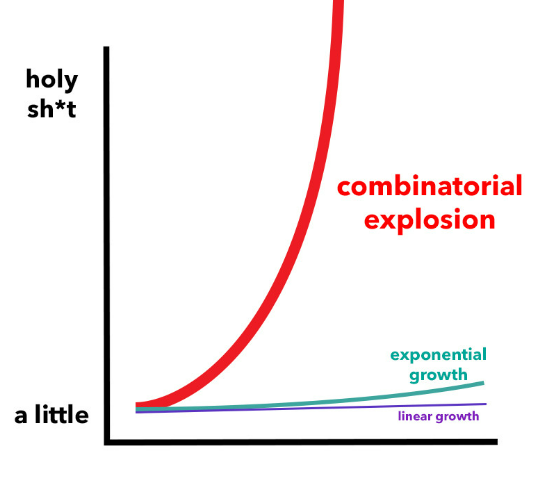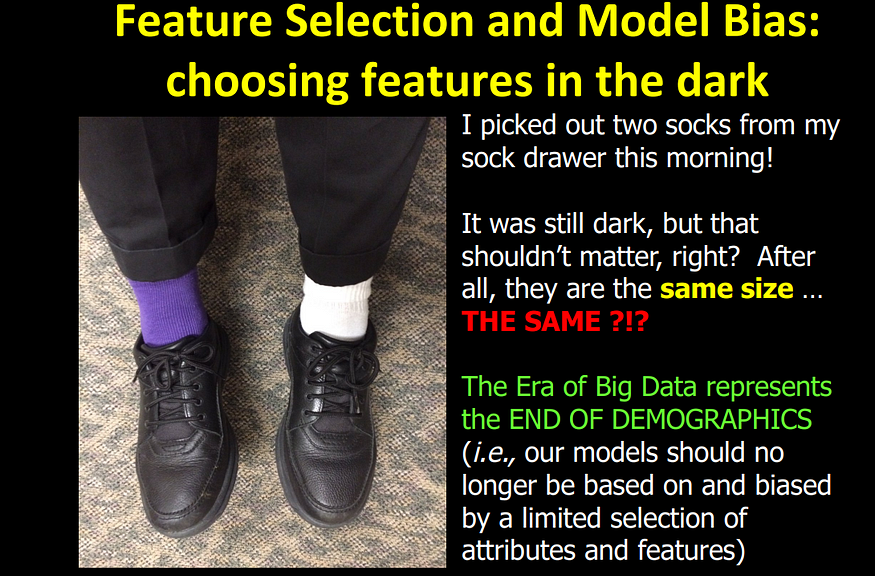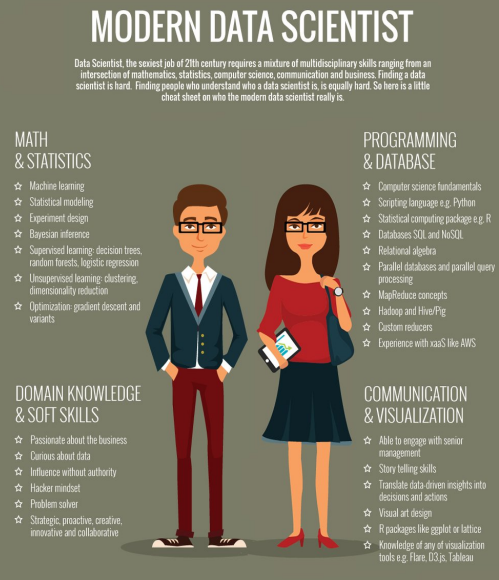Unlock Your Data’s Potential with Data Science
Last Updated on July 25, 2023 by Editorial Team
Author(s): Chinmay Bhalerao
Originally published on Towards AI.
A bird-eye view introduction of everything about data science
“Now its time to begin thinking of Data Science as a profession not a job, as a corporate culture not a corporate agenda, as a strrategy not a stratagem, as a core competency not a cource, and as a way of doing things not a thing to do” — @kirkDBorne (January12, 2015)
Data science is a multidisciplinary field that involves the use of techniques from statistics, mathematics, computer science, and domain expertise to extract insights from data. With the growing amount of data being generated and collected in various domains, data science has become increasingly important in recent years.
As new technologies and techniques are developed, data scientists are able to tackle increasingly complex problems and extract deeper insights from data. Data science involves several key stages, including data collection, data cleaning, data analysis, and data visualization. Data scientists use a variety of tools and techniques to collect and process data, including database systems, programming languages, and data visualization software. They also use statistical methods and machine learning algorithms to analyze and extract insights from the data.
Difference between data science, machine learning, and Artificial intelligence.
New people in this field are often confused about these three terms. Let's elaborate on each one by one.

Data science is a multidisciplinary field that involves using techniques from statistics, mathematics, computer science, and domain expertise to extract insights from data. Data scientists use a variety of tools and techniques to collect, clean, analyze, and visualize data and to communicate their findings to stakeholders. Data science is focused on solving complex problems through data analysis.
Machine learning is a subfield of data science that involves using algorithms and statistical models to enable computers to learn from data and make predictions or decisions without being explicitly programmed. Machine learning is often used for tasks such as image or speech recognition, recommendation systems, and natural language processing.
Artificial intelligence is a broader field that encompasses machine learning, as well as other techniques such as expert systems, rule-based systems, and genetic algorithms. AI is focused on creating intelligent machines that can simulate human cognitive abilities, such as problem-solving, reasoning, and learning.
In summary, data science is focused on extracting insights from data, while machine learning is focused on developing algorithms to enable computers to learn from data and make predictions. Artificial intelligence is a broader field that encompasses machine learning and other techniques to create intelligent machines.Data science, machine learning, and artificial intelligence (AI) are related fields, but they have distinct differences.
What is data in data science?
In data science, there are several types of data that you may encounter, including:

- Numerical data: This type of data is represented by numbers and can be continuous (e.g., height, weight) or discrete (e.g., number of siblings). Numerical data can be analyzed using statistical methods such as regression analysis and hypothesis testing.
- Categorical data: This type of data is represented by categories or labels, such as colors, genders, or types of animals. Categorical data can be analyzed using methods such as frequency tables and chi-squared tests.
- Text data: This type of data consists of words, phrases, and sentences. Text data is often analyzed using natural language processing (NLP) techniques such as sentiment analysis and topic modeling.
- Time series data: This type of data consists of observations taken over time, such as stock prices or weather data. Time series data can be analyzed using methods such as time series forecasting and trend analysis.
- Image data: This type of data consists of visual information, such as photographs, medical images, and satellite images. Image data can be analyzed using computer vision techniques such as object detection and image segmentation.
- Audio data: This type of data consists of sound information, such as speech or music. Audio data can be analyzed using techniques such as speech recognition and music genre classification.

It’s important to understand the type of data you’re working with in order to select the appropriate analytical methods and techniques for your data science project.
How to deal with data, and what are the steps to do data analysis with any kind of data?
Dealing with data is one of the most important aspects of data science. Here are some general steps for dealing with data in data science:
- Data Collection: The first step is to collect the relevant data that you want to analyze. This can involve collecting data from various sources such as databases, APIs, web scraping, surveys, and other data sources.

- Data Cleaning: Once you have collected the data, you need to clean it to ensure that it is accurate and consistent. This involves identifying and correcting errors, removing duplicates, and dealing with missing values.

- Data Exploration: After cleaning the data, it’s important to explore the data to gain a better understanding of its characteristics. This includes creating visualizations, performing statistical analysis, and identifying patterns and relationships in the data.
- Feature Engineering: This step involves selecting the relevant features (variables) that are important for your analysis. You can create new features or transform existing ones to make them more useful.

- Data Modeling: This involves selecting the appropriate model for your analysis, training it on the data, and evaluating its performance.
- Model Interpretation: After building the model, you need to interpret the results to gain insights into the underlying data and draw meaningful conclusions.
- Deployment: The final step is to deploy the model in a production environment so that it can be used for real-world applications.
Overall, dealing with data in data science involves a combination of technical skills, creativity, and critical thinking to extract meaningful insights from large and complex datasets.
Do you require maths or statistics for data science?
Mathematics and statistics are essential skills for data scientists, as they form the foundation of many of the techniques used in data science.
Here are some of the key mathematical and statistical concepts that data scientists should be familiar with:
- Linear algebra: Linear algebra is a branch of mathematics that deals with linear equations and vectors. It is an important tool for working with matrices, which are commonly used to represent data in data science.
- Calculus: Calculus is a branch of mathematics that deals with rates of change and the properties of continuous functions. It is used in optimization, which is an important technique for many machine learning algorithms.
- Probability theory: Probability theory is the branch of mathematics that deals with the study of random events. It is used in statistical inference and hypothesis testing, which are important tools for making decisions based on data.
- Statistics: Statistics is the branch of mathematics that deals with the collection, analysis, interpretation, presentation, and organization of data. It includes techniques such as regression analysis, hypothesis testing, and experimental design.
- Optimization: Optimization is a branch of mathematics that deals with finding the best solution to a problem, given certain constraints. It is used in many machine learning algorithms, which involve finding the best set of parameters to fit a model to data.
In addition to these concepts, data scientists should be comfortable with programming and have a good understanding of algorithms and data structures. They should also be able to communicate their findings effectively to stakeholders, which requires strong written and verbal communication skills.
Data scientist or data analyst? What is the difference?
Data scientists and data analyst both deals with data. Data analysts typically focus on analyzing data to find patterns, trends, and insights that can inform business decisions. They may work with structured data (e.g., from databases) or unstructured data (e.g., from social media), but their primary goal is to answer specific business questions. Data scientists, on the other hand, have a broader scope that includes not just analysis, but also machine learning, statistical modeling, and other advanced techniques. They may be tasked with building predictive models, developing algorithms, or designing experiments to test hypotheses.
Data analysts tend to work primarily with tools like Excel, SQL, and Tableau, as well as statistical software like R or Python. They use these tools to perform data cleaning, aggregation, and visualization and may also use basic statistical techniques to perform descriptive analysis. Data scientists, on the other hand, are expected to have a deeper understanding of advanced statistical methods and machine learning algorithms. They may use tools like TensorFlow, PyTorch, or scikit-learn to build and test models, and may also have expertise in big data technologies like Hadoop or Spark.
While both roles can have a significant impact on the business, the types of problems they solve may differ. Data analysts tend to focus on operational problems, such as improving customer satisfaction, optimizing pricing, or reducing churn. Data scientists, on the other hand, may work on more strategic problems, such as identifying new business opportunities, developing new products, or optimizing the supply chain.
Overall, the distinction between a data scientist and a data analyst is not always clear-cut, and the specific responsibilities of each role can vary depending on the organization and industry. However, understanding these differences can help organizations better define their data-related roles and responsibilities and ensure that they have the right talent in place to tackle their data challenges.

Data science is an important field for several reasons
- Better decision-making: Data science helps organizations and individuals make better decisions by analyzing data and extracting insights. By leveraging large and complex datasets, data scientists can identify patterns, relationships, and trends that may not be visible to the naked eye.
- Improved efficiency: Data science can help automate and optimize various processes, reducing the time and effort required to perform certain tasks. This can result in increased productivity and efficiency.
- Competitive advantage: In today’s data-driven world, organizations that can effectively harness data are more likely to gain a competitive advantage. By using data science to identify new opportunities, improve processes, and better understand customer needs, organizations can stay ahead of the curve.
- Innovation: Data science is a key driver of innovation, enabling new products and services that may not have been possible without the use of data. For example, data science has played a major role in the development of self-driving cars, personalized medicine, and predictive maintenance.
- Social impact: Data science has the potential to address a wide range of social and environmental challenges, such as disease prevention, climate change, and poverty reduction. By analyzing data and identifying patterns, data scientists can help identify and address these challenges.
Overall, data science is an important field because it provides a powerful set of tools and techniques for analyzing data and extracting insights, leading to better decision-making, improved efficiency, competitive advantage, innovation, and social impact.
Data science has several key features that distinguish it from other fields:
- Multidisciplinary: Data science brings together techniques from various fields, including statistics, mathematics, computer science, and domain expertise. As such, data scientists must have a broad range of skills and be comfortable working with different types of data.
- Data-driven: Data science is focused on using data to make better decisions. Data scientists use a variety of tools and techniques to collect, process, analyze, and visualize data, with the ultimate goal of extracting insights that can inform decision-making.
- Iterative: Data science is an iterative process, with data scientists often refining and adjusting their methods as they work with the data. This involves testing different models, adjusting parameters, and exploring different visualizations in order to gain a deeper understanding of the data.
- Scalable: With the increasing amount of data being generated and collected, data science must be able to scale to handle large and complex datasets. Data scientists use a variety of tools and techniques to work with big data, including distributed computing, cloud computing, and data storage technologies.
- Focus on real-world applications: Data science is focused on using data to solve real-world problems, with applications in a wide range of domains, such as business, healthcare, education, and more. As such, data scientists must be able to communicate their findings effectively to stakeholders and make recommendations that can be acted upon.
Overall, data science is a field that is focused on using data to make better decisions, with a multidisciplinary approach that involves collecting, processing, analyzing, and visualizing data. It is an iterative process that is scalable to handle large and complex datasets, with a focus on real-world applications in a variety of domains.
There are many influential leaders in the field of data science who have contributed to the growth and development of this field. Here are some notable examples:
- Andrew Ng: Andrew Ng is a computer scientist and entrepreneur who co-founded Google Brain and founded the online learning platform Coursera. He has made significant contributions to the development of machine learning and deep learning, and his online courses on these topics have been popular with students around the world.
- Fei-Fei Li: Fei-Fei Li is a computer scientist and AI researcher who is known for her work on computer vision and deep learning. She is a professor at Stanford University and the founder of the AI4ALL initiative, which aims to increase diversity and inclusion in the field of AI.
- DJ Patil: DJ Patil is a data scientist and entrepreneur who served as the first Chief Data Scientist of the United States during the Obama administration. He has made significant contributions to the development of data science, including coining the term “data science” and co-authoring the book “Building Data Science Teams”.
- Yann LeCun: Yann LeCun is a computer scientist and AI researcher who is known for his work on deep learning and convolutional neural networks. He is a professor at New York University and the director of Facebook AI Research, where he has contributed to the development of several important AI applications.
- Cathy O’Neil: Cathy O’Neil is a data scientist and author who is known for her work on data ethics and algorithmic bias. Her book, “Weapons of Math Destruction”, has been widely read and has helped to raise awareness about the potential harms of relying on data and algorithms in decision-making.
And how can I forget,
- Dr. Kirk Borne: Dr. Kirk Borne is the Principal Data Scientist at Booz Allen Hamilton (since 2015). He supports the Strategic Innovation Group in the area of NextGen Analytics and Data Science. He previously spent 12 years as Professor at George Mason University as a graduate (Ph.D.) Computational Science and Informatics program and undergraduate (B.S.) Computational Data Sciences program. Before that, he worked for 18 years on various NASA contracts — as a research scientist, as a manager on a large science data system contract, and as the Hubble Telescope Data.
Summary
The key goal of data science is to use data to make better decisions. By analyzing large and complex datasets, data scientists can identify patterns, relationships, and trends that may not be visible to the naked eye. They can then use these insights to inform decision-making in a wide range of domains, such as business, healthcare, education, and more. Data science is a rapidly evolving field that is constantly pushing the boundaries of what is possible with data. As such, data science is a field that is both challenging and rewarding, with the potential to make a significant impact on society.
“Come for the Data. Stay for the Science!”
If you have found this article insightful
It is a proven fact that “Generosity makes you a happier person”; therefore, Give the article claps if you liked this article. If you found this article insightful, follow me on Linkedin and medium. You can also subscribe to get notified when I publish articles. Let’s create a community! Thanks for your support!
You can read my other blogs related to :
YOLO v8! The real state-of-the-art?
My experience & experiment related to YOLO v8
medium.com
Genetic Algorithm Optimization
A detailed explanation of the evolutionary and nature-inspired optimization algorithm
pub.towardsai.net
Comprehensive Guide: Top Computer Vision Resources All in One Blog
Save this blog for comprehensive resources for computer vision
medium.com
Improving Accuracy of Text Extraction with Simple Techniques
understanding data and problem statements to make predictions better
pub.towardsai.net
Signing off,
CHINMAY
Join thousands of data leaders on the AI newsletter. Join over 80,000 subscribers and keep up to date with the latest developments in AI. From research to projects and ideas. If you are building an AI startup, an AI-related product, or a service, we invite you to consider becoming a sponsor.
Published via Towards AI
Take our 90+ lesson From Beginner to Advanced LLM Developer Certification: From choosing a project to deploying a working product this is the most comprehensive and practical LLM course out there!
Towards AI has published Building LLMs for Production—our 470+ page guide to mastering LLMs with practical projects and expert insights!

Discover Your Dream AI Career at Towards AI Jobs
Towards AI has built a jobs board tailored specifically to Machine Learning and Data Science Jobs and Skills. Our software searches for live AI jobs each hour, labels and categorises them and makes them easily searchable. Explore over 40,000 live jobs today with Towards AI Jobs!
Note: Content contains the views of the contributing authors and not Towards AI.














